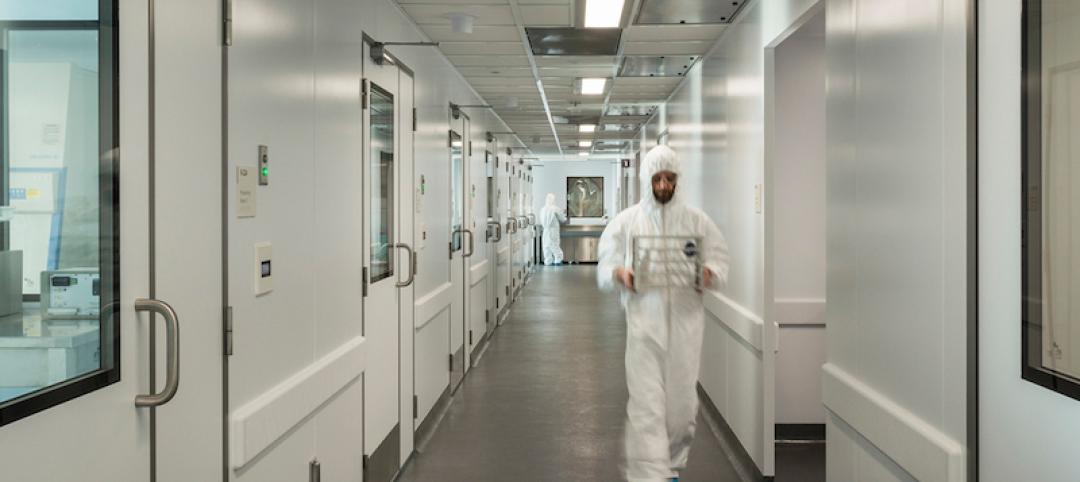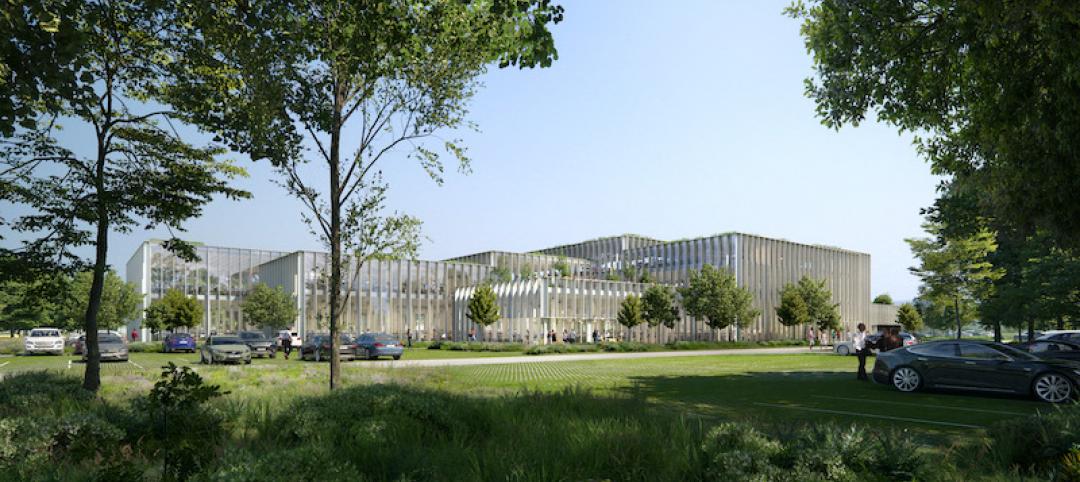HOK worked on the Francis Crick Institute for more than seven years. The firm was as much a mediator as it was the project’s architect and designer.
The 980,000-sf, $931 million facility is the result of a unique financing mechanism that brought together three of the U.K.’s heaviest funders of biomedical research—the Medical Research Council, Cancer Research UK, and the Wellcome Trust—and three leading universities—University College London, Imperial College London, and King’s College London.
“The Crick,” as it’s known, is organized into four “laboratory neighborhoods” that encourage multidisciplinary interaction among its 1,500 scientists. Offices and labs have floor-to-ceiling glazing. The facility is designed around two atria that allow visibility throughout the building and between floors.
David King, RIBA, Technical Principal for HOK’s London office, provides insider details about what it took to get the Francis Crick Institute from launch to completion.
According to King, the six partners that funded the institute had “different protocols and procedures, often different funding methods, and organizational structures.”
To build consensus about key expectations and outcomes, HOK established 12 main user groups, which HOK encouraged to focus on how the building’s operations would work in the future, and how best practices from other research facilities around the world could be incorporated.
“The fundamental challenge was whether the building would become home to six institutions sharing common facilities, or one institution made up of several constituents. Happily, it is the latter,” says King.
HOK also had to deal with outside forces that could have tied the project in knots. “The Commission for Architecture and the Built Environment, the Mayor of London, and Camden Council had widely differing views on how the building should look,” recalls King. Camden Council initially opposed the proposed development altogether, preferring to use the site for social housing.
PLP Architecture was appointed to the project because of its previous work with Camden’s planning department. “We worked with PLP to focus on the building’s envelope and outward expression in order to shape the building into a civic landmark that Camden would approve,” said King.
The solution: One-third of the structure is below ground level, and its curved roof design is meant to create a more inviting perspective for the surrounding community.
Over the course of the project, HOK retained at least seven other sub-consultants for their expertise in such areas as acoustics (Cole Jarman), lighting (Porkorny Lichtarchitektur), biological resource facilities (Boswell Mitchell & Johnson), shielding (VitaTech), building maintenance and systems access (REEF Associates), cladding (EPPAG), and computer graphics imagery (Glowfrog).
Related Stories
Architects | Aug 5, 2021
Lord Aeck Sargent's post-Katerra future, with LAS President Joe Greco
After three years under the ownership of Katerra, which closed its North American operations last May, the architecture firm Lord Aeck Sargent is re-establishing itself as an independent company, with an eye toward strengthening its eight practices and regional presence in the U.S.
Architects | Aug 5, 2021
Lord Aeck Sargent's post-Katerra future, with LAS President Joe Greco
After three years under the ownership of Katerra, which closed its North American operations last May, the architecture firm Lord Aeck Sargent is re-establishing itself as an independent company, with an eye toward strengthening its eight practices and regional presence in the U.S.
Laboratories | May 6, 2021
The big shift: How laboratory design should respond to personalized medicine
Crucial to the success of personalized medicine is the “big shift” away from large-scale pharmaceutical manufacturing to small-scale lab manufacturing.
Laboratories | Mar 10, 2021
8 tips for converting office space to life sciences labs
Creating a successful life sciences facility within the shell of a former office building can be much like that old “square peg round hole” paradigm. Two experts offer important advice.
Giants 400 | Dec 3, 2020
2020 Science & Technology Facilities Giants: Top architecture, engineering, and construction firms in the S+T sector
HDR, Jacobs, and Turner head BD+C's rankings of the nation's largest science and technology (S+T) facilities sector architecture, engineering, and construction firms, as reported in the 2020 Giants 400 Report.
Giants 400 | Dec 3, 2020
2020 Laboratory Facilities Sector Giants: Top architecture, engineering, and construction firms in the U.S. laboratory facilities sector
Affiliated Engineers, HDR, and Skanska top BD+C's rankings of the nation's largest laboratory facilities sector architecture, engineering, and construction firms, as reported in the 2020 Giants 400 Report.
Laboratories | Nov 16, 2020
Washington State University’s new Plant Sciences Building opens
LMN Architects designed the project.
AEC Tech Innovation | Sep 18, 2020
New Innovation Center should heighten Port San Antonio’s tech profile
The facility will include a 2,500-seat arena and serve as new home for the city’s S&T museum.
Laboratories | Aug 25, 2020
Video: What's driving the boom in life sciences real estate?
JLL's Audrey Symes discusses the drivers of growth across the nation's life sciences cluster hubs.
















